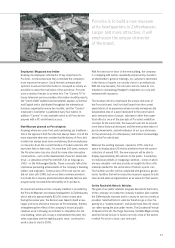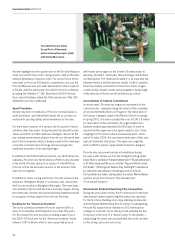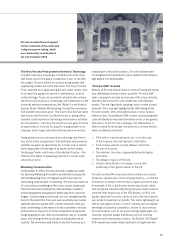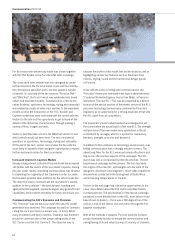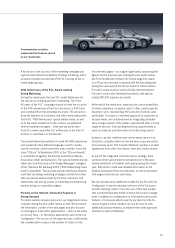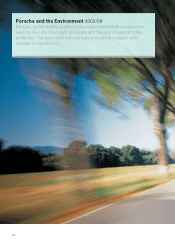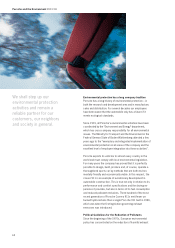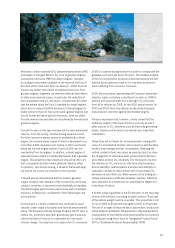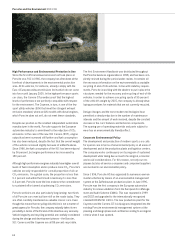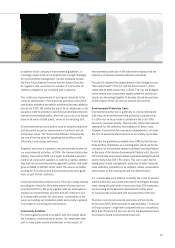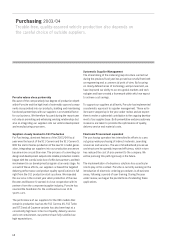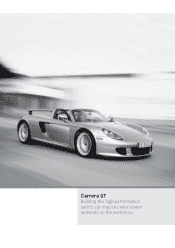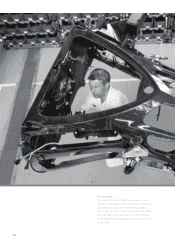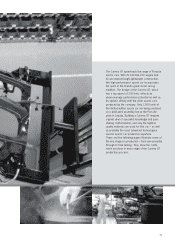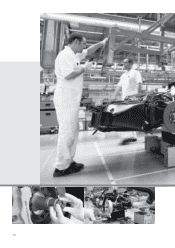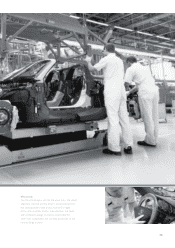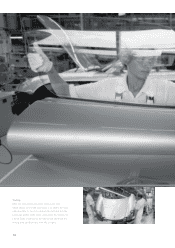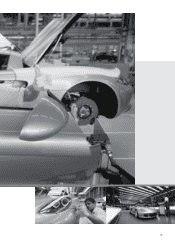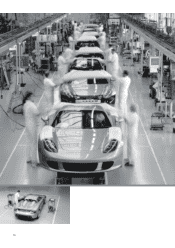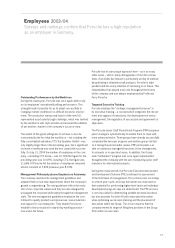Porsche 2003 Annual Report Download - page 71
Download and view the complete annual report
Please find page 71 of the 2003 Porsche annual report below. You can navigate through the pages in the report by either clicking on the pages listed below, or by using the keyword search tool below to find specific information within the annual report.
67
In addition to the company’s environmental guidelines, in-
creasingly severe political constraints pose a tough challenge
for environmental management. Current examples include
the Flora Fauna Habitat Directive and the Solvent Directive.
As a general rule, we ensure as a matter of course that all
statutory obligations are complied with in advance.
The continuous improvement of ecological standards is the
common denominator of all objectives laid down in the 2002
certification and which we need to achieve by the next validation
process in 2005. We invoke the aid of all our employees conti-
nuously in order to promote corporate environmental protection.
Internal environmental audits, which we carry out on an annual
basis in all areas at both plants, serve as a monitoring tool.
An environmental process audit is used to analyze production
and document scope for improvement in technical and ad-
ministrative areas. The “Environment Weeks” held annually
are one of the key tools for supplying the workforce with
information and raising awareness.
Suppliers and service companies are permanently involved in
our environmental activities. In 2004, the German Automotive
Industry Association (VDA) once again distributed a question-
naire to all component suppliers in order to ascertain whether
they had set up environmental management systems and under-
gone an EMAS or DIN ISO 14001 audit. The service providers
working for Porsche receive environmental protection guide-
lines as part of their contracts.
In the environmental protection area, Porsche is today already
providing the stimuli for the enhancement of tomorrow’s en-
vironmental efforts. We work together with our employees to
expand our environmental activities and will continue to act
as a responsible partner for customers, communities in the
areas surrounding our production plants and society in general
in all matters concerning the environment.
Community Activities
Porsche regularly provides the public with information about
the company’s environmental activities. Our employees take
part in many public events and debates on the subject of
environmental protection in the automotive industry and are
members of national and international committees.
Porsche AG initiated the establishment of the Stuttgart forum
“Auto und Umwelt” (“The Car and the Environment”), which
celebrated its tenth anniversary in 2004. The city, the Stuttgart
motor-vehicle and components supply industries and the uni-
versity are all working together to develop shared perspectives
on the subject of the car, the city and the environment.
Environmental Protection Costs
Environmental protection is generally so closely intertwined
with many other development and production activities that
it is often not an easy matter to determine the cost of the
necessary measures exactly. There are also still no international
standards for the definition and evaluation of these costs.
However, Porsche has for many years endeavored to calculate
the cost of environmental protection as accurately as possible.
If we take the guidelines provided since 1980 by the German
Federal Office of Statistics as a starting point, which call for the
calculation of environment-related overheads and expenditure
on the basis of the German Environmental Statistics Act, the cost
of Porsche AG’s environment-related overheads during the period
under review total EUR 7.96 million. This sum covers the fol-
lowing areas: waste management, protection of water resources,
noise reduction, prevention of air pollution, nature conservation,
preservation of the countryside and soil detoxification.
It is considerably more difficult to identify the costs of environ-
mental protection associated with vehicle and engine develop-
ment: during the year under review more than 300 employees
were working at the Weissach development center alone
on various tasks associated with environmental protection.
The total cost of environmental protection at Porsche AG
for the year 2003/2004 amounts to approximately 1.7 percent
of Group turnover– a high level compared with our competitors.
More than 70 percent of this sum went to the development area
for product-related environmental protection.


